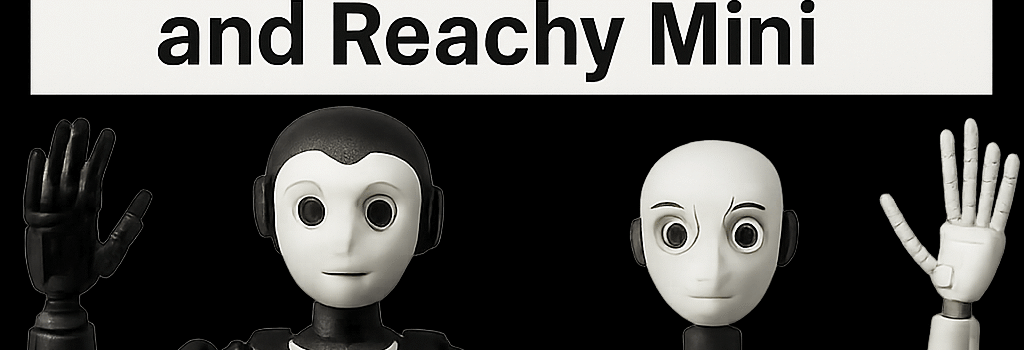Hugging Face’s $3,000 Open-Source Humanoids: HopeJR and Reachy Mini

Hugging Face, renowned for its AI model hub, is diving deeper into robotics with two new open-source platforms: the bipedal HopeJR and the compact Reachy Mini. Priced at approximately $3,000 and $250 respectively, these robots aim to democratize robotics R&D.
HopeJR: A Low-Cost Humanoid with High Degrees of Freedom
The HopeJR, co-developed with The Robot Studio, features an impressive 66 actuated degrees of freedom (DoF) across its limbs, neck, and torso, enabling dynamic walking, object manipulation, and expressive gestures. Powered by a custom Linux-based control unit and dual NVIDIA Jetson Orin modules, it delivers real-time inference for simultaneous localization and mapping (SLAM), object detection, and reinforcement-learning-driven motion planning.
- Actuators: 24 high-torque brushless DC servos (peak torque 12 Nm) on legs, 20 micro-servo joints on arms, and 22 micro-actuators for neck and hands.
- Sensors: Stereo RGB-D cameras, IMU, force-torque sensors in feet, and tactile arrays in fingertips.
- Compute: Dual NVIDIA Jetson Orin NX (21 TOPS each) + ARM Cortex-A72 companion board for safety and low-level control.
- Power & Battery: 120 Wh Li-ion pack, hot-swappable, up to 90 minutes continuous operation at moderate workload.
Software Stack and Open-Source Integration
HopeJR runs a ROS 2 Galactic distribution with custom packages available on the Hugging Face Hub. It supports popular frameworks like TensorFlow, PyTorch, and JAX, and integrates with the Transformers library for natural language processing demos.
“By open-sourcing both hardware and software, we lower the barrier to entry for robotics research,” said Clem Delangue, CEO of Hugging Face. “Our goal is to prevent robotics from becoming a closed ecosystem dominated by a few players.”
Reachy Mini: A Social Robot for AI Experimentation
Reachy Mini is a modular bust-style robot resembling a desktop companion. Equipped with pan-tilt RGB cameras, beamforming microphones, and an onboard microcontroller, it offers advanced audio-visual interaction for voice assistants, emotion recognition, and conversational AI tests.
- Degrees of Freedom: 2 in the neck, 2 in each arm segment.
- Audio-Visual: Dual MEMS microphones, 5 MP RGB camera with IR illumination.
- Compute: Raspberry Pi CM4 + Coral Edge TPU accelerator.
- Price: USD 250–300.
Technical Deep Dive
Leveraging lessons from the 3D-printable robotic arm released earlier this year, Hugging Face standardized on modular joints and open-source ESC firmware, inspired by Pollen Robotics’ Flexiva technology. The result is a flexible architecture that supports custom end effectors, LiDAR add-ons, and third-party ROS 2 drivers.
Developer Ecosystem and Community Engagement
Hugging Face is extending its model-sharing ethos to hardware. Both HopeJR and Reachy Mini will have dedicated spaces on the Hugging Face Hub, featuring:
- CAD files under CC BY-SA 4.0 for 3D printing and DIY kits.
- ROS 2 packages, simulation environments in Gazebo and PyBullet.
- Community forums, tutorials, and monthly hackathons with prize pools funded by the recent $234 million Series D.
Market Landscape and Competitive Analysis
At $3,000, HopeJR undercuts Unitree’s G1 ($16,000) and edges toward Tesla’s Optimus Gen 2 (estimated >$20,000). While Optimus targets mass production, the open-source model appeals to academic labs and startups.
“We’re witnessing a paradigm shift,” noted Dr. Ayanna Howard, Dean of Engineering at The Ohio State University. “Accessible humanoids accelerate research in human-robot interaction and assistive technologies.”
Future Roadmap and Industry Impact
Hugging Face plans to release an SDK with automated calibration tools and cloud-based fleet management optimized for Kubernetes deployment, enabling schools and SMEs to orchestrate multi-robot labs via Hugging Face’s Inference API.
With these announcements, Hugging Face solidifies a vision where open-source robotics merges seamlessly with AI development, fostering innovation across research institutes, maker spaces, and enterprise R&D.